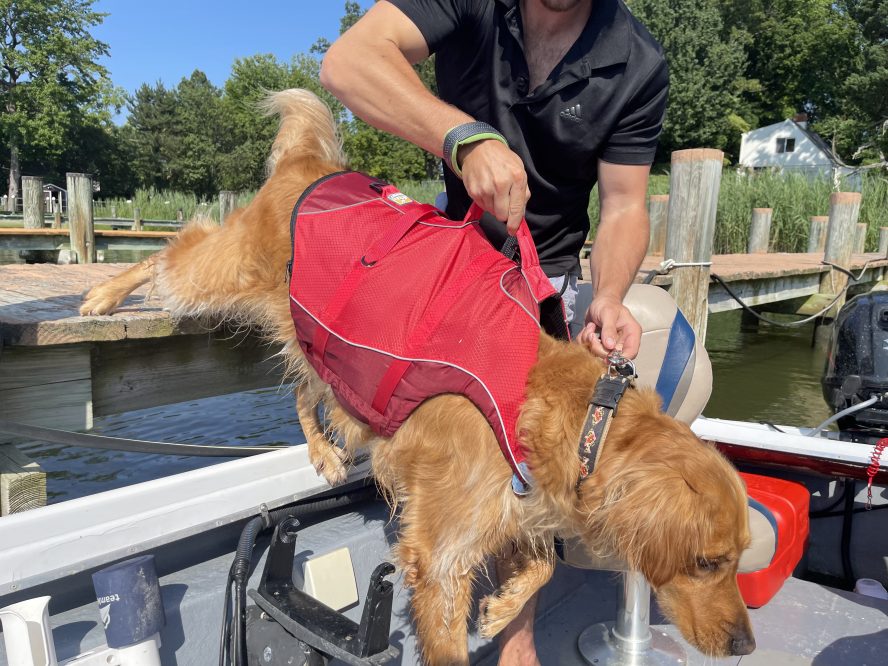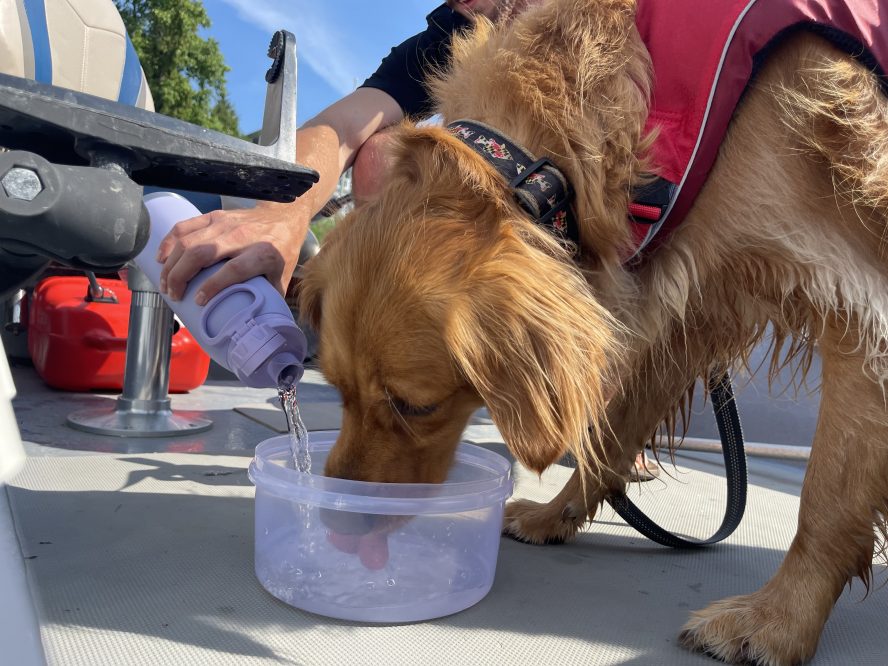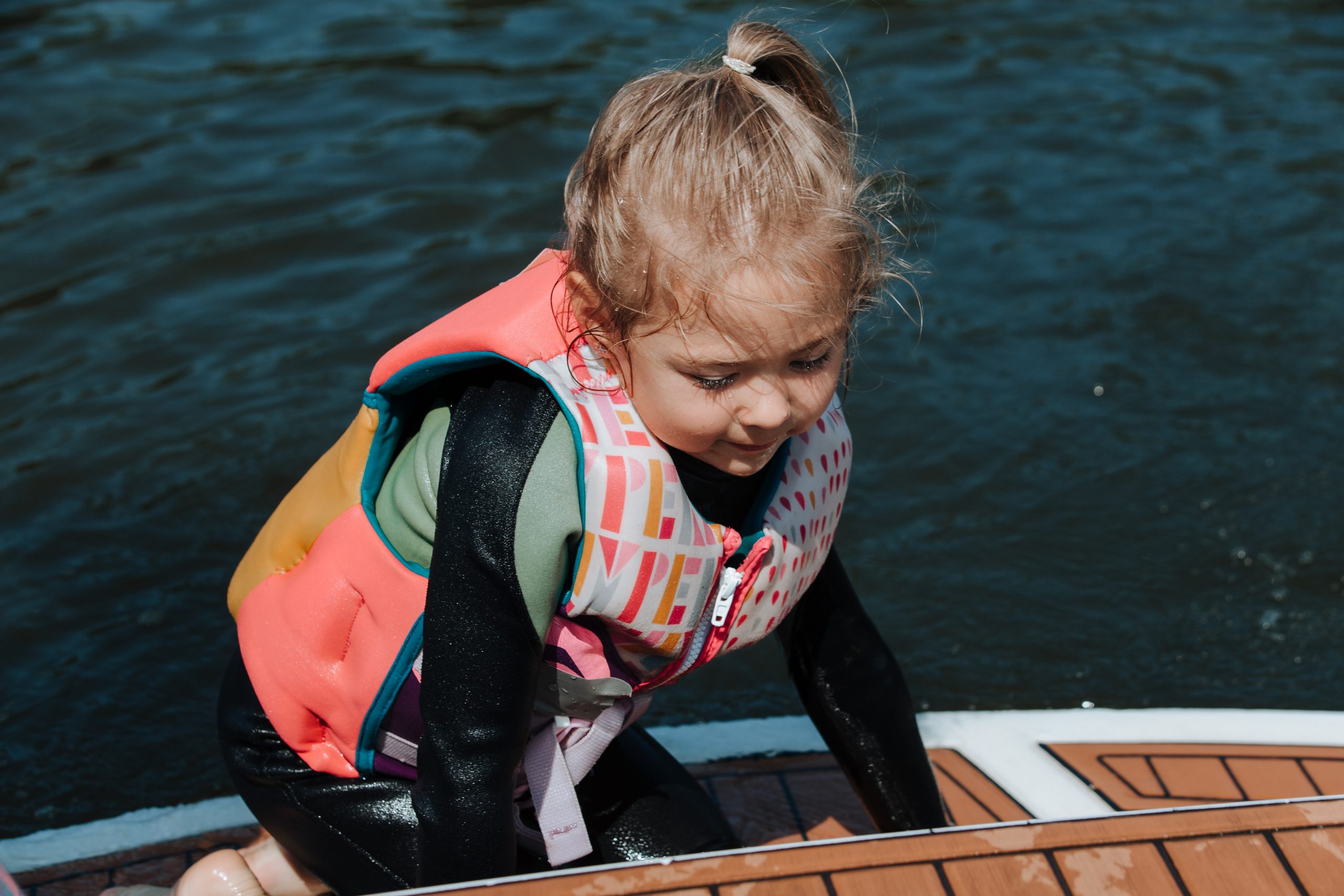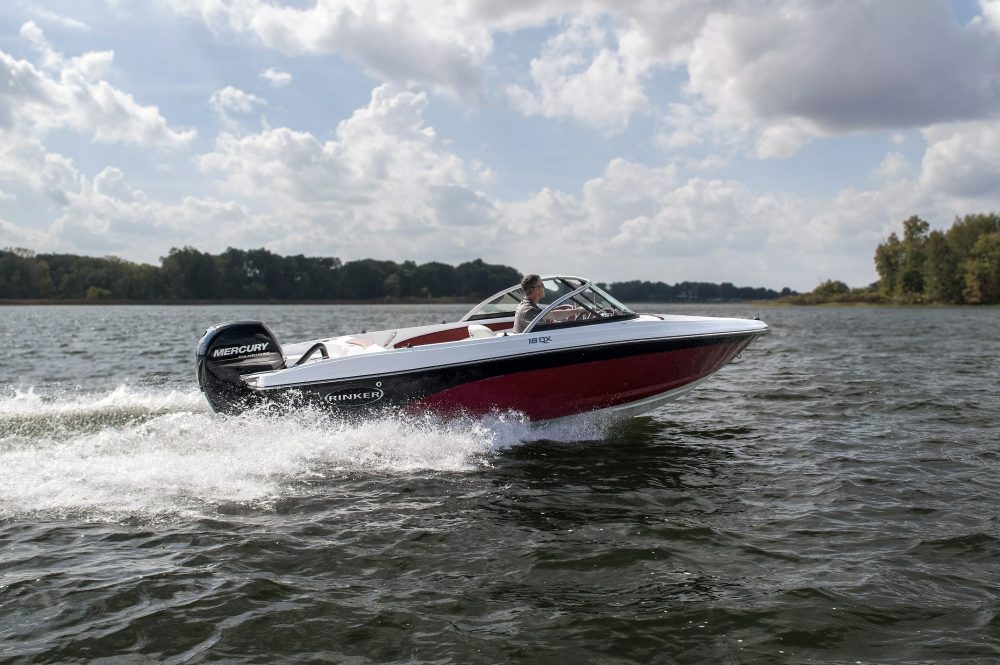Best Tips for Boating with Dogs
Here are our best tips for a dog-friendly boat day.
Between prepping for the voyage and all the extra excitement onboard, every time we take our dog, Finn, on the boat is truly an event. As soon as his lifejacket is out, he's tearing anticipatory circles around the yard. On the water, he loves to bark at osprey and snap at brackish spray. Finn is one among legions of dogs lucky enough to spend time out on the water. But getting him out there requires some prep and returning safely requires its own set of know-how. Check out my best tips to get you and your dog ready for your next boat day.
Before You Go

Have a Canine Lifejacket
Having a lifejacket on your pooch can make all the important, lifesaving difference in a dog-overboard situation. In addition to giving dogs buoyancy, many lifejackets are available in bright colors that would make your pooch easier to see if they ended up in the water. If you don't already have a canine life jacket, search for one with reflective areas that give additional visibility. Ensure it has the right fit and that all buckles and straps are properly secured. Choose a lifejacket that you're comfortable handling your dog in, too. Test handles and straps to ensure they're strong enough to lift your dog out of the water and that you can get a comfortable grip on them.
Set a Safe Boarding Procedure
Just as with humans, stepping from the dock to the boat can be an intimidating task for dogs. An overzealous dog could easily slip between the boat and the dock. Determine what kind of boarding routine is comfortable and safe for you and your dog. Small and medium dog owners might opt to carry their dogs aboard, whereas large dog owners may need a boarding ramp, ladder, or alternative accommodation. If your dog is able to safely step onto the boat on their own, make sure you're guiding them down and holding onto life jacket handles. Ensure any obstructions are out of the way, like coolers or dock lines, and always board from the same location so your dog has a routine to expect.
Bring Plenty of Fresh Water
Dogs don’t sweat, so they can overheat and will pursue just about any available water source. Onboard, you might find them lapping from the livewell or heading to the motor well. Teach your dog only to drink fresh water, and have plenty of it available at all times on the boat. Keep their bowl in a designated area they can return to throughout the day. When you're boating in salt and brackish water sources, it's important to ensure your dog isn't sipping from over the side. Saltwater in small quantities can cause a case of the runs, and consuming large quantities can have more dire effects.

Safety On Board
All ready to cast off your lines? Keep these tips in mind next time you're on the water with furry friends.
Have a Dog Overboard Plan
We all hope our dog isn't going to end up in the water, but accidents do happen. Preparing for dog overboard situations help reaction time for getting to the dog in the boat. Ensure the captain knows to cut the engine into neutral immediately, but not turn the engine off. This will disable the boat from reaching the overboard party faster if they become unreachable. Make a plan for who will be responsible for lifting the dog back on board and ensure there is someone on the boat who is comfortable and able to do so.
Always have a designated dog-spotter from the ramp and back to mitigate the chances of needing to put your plan into action. They should be responsible for keeping track of the dog's whereabouts while managing them.

Monitor for Signs of Seasickness
Dogs can get seasick just like people. All the same signs and symptoms apply, including dizziness, lethargy, and vomiting. If you see your dog developing these signs, stop the boat and get the dog ashore. If you have a cabin boat, keep them above deck to reduce the chances of them becoming ill. To avoid repeat cases, consult with your veterinarian and see if it's safe to give your dog a seasickness medication. Or, consider whether your dog actually wants to go boating with you at all — it’s not for everybody.
Designate a Dog-Safe Zone
Dogs should always have an area they're trained to go to, to keep them away from any boating action they could potentially interfere with (like setting the anchor), and so they have a separate space if they're feeling overwhelmed. This should always be an accessible, shady area to cool off because dogs can overheat quickly. Whether it be under the bimini or a bring-aboard sunshade, having a space they can cool down is essential. Their water bowl should be located here, too. Even if one of these spaces is available, some days might simply be too hot to safely take your dog on the water depending on their breed.
Fishing with Dogs

Secure all Hooks and Bait
Dogs keen sense of smell is part of what has made them such valuable co-workers for humans… but on a fishing boat, it’s likely to get them into trouble. Chunks of menhaden, stinky soft plastics, and any other rig aboard that’s meant for attracting fish are likely to draw in your dog, too. When lines are out of the water, keep rigs out of your dog’s zone. Anglers should be aware of where dogs are when casting or unhooking fish: these are prime opportunities for accidents to happen. Utilize your rod's hook-keeper at all times so no tempting lures are flying around and place rods in rocket launchers or other elevated areas when the boat isn't running.
What to do if your dog gets hooked
While dog owners should take every precaution to prevent their pooches from chomping down on a hook, accidents happen. I’ll never forget when my dog jumped off a dock in hot pursuit of a topwater lure, or the time we turned our backs and he downed an entire chumming day's bait supply. Unexpected moments like these are what responsible dog owners must know how to respond to on the water. A best practice is to take your dog to the vet if it is hooked, regardless of location. Stay calm and cut the line so there isn’t tension pulling the hook deeper and causing further damage. If needed, calm your dog and safely restrain them. Swallowing a hook can be a life-threatening situation for dogs. With a quick response time and help from a veterinarian, the hook can be removed to avoid the serious damage that would occur if it was allowed to pass.
Prepare for the Washdown
Life has few universal truths, but here's one: the smell of wet dog and dead fish do not go well together. While it may seem like common sense, keeping your vessel clean while the dog’s aboard will save you a boat-load of hassle later. Wash down any surfaces that bait has been cut on or the chum bucket has been hanging around. Keep the designated goo-and-blood hand towel in an elevated location where your pup isn’t going to be rubbing on or eating it. Likewise, hit the deck with some water if you’re bringing in fish. Toss together a storage box with a towel, brush, and an outdoor dog shampoo so you can rinse your dog down back at the dock.
Pro-tip: dump fishy ice from the cooler in a location your dog cannot access.
Boating with your dog can be an incredibly rewarding experience— there's nothing like seeing their ears blow in that beloved sea breeze. Just remember to refresh your memory on these dog-friendly boating tips to make sure your boat day is full of nothing but sunny skies and wagging tails. Bringing the dog and the boat to the ramp? Check out our trailering safety tips so you can head out with confidence.












